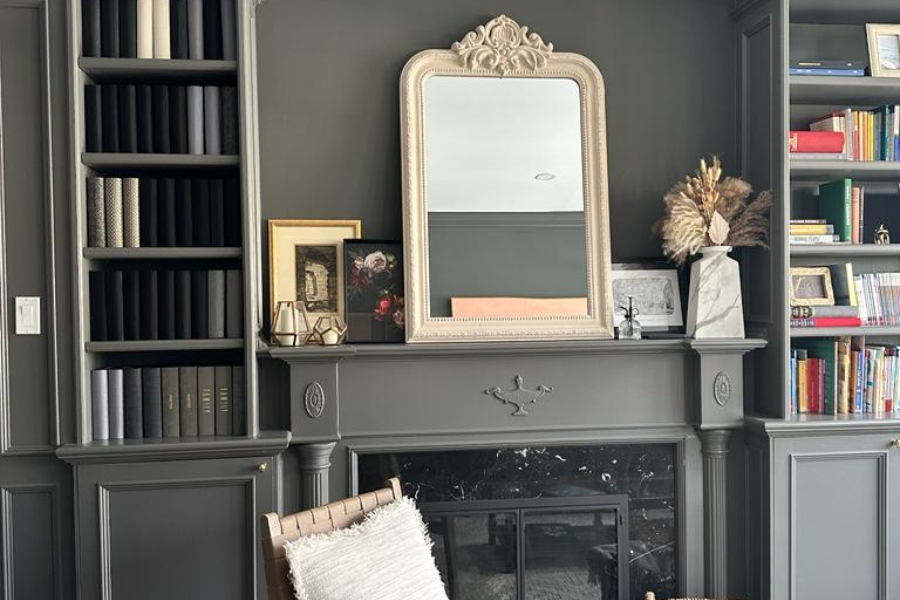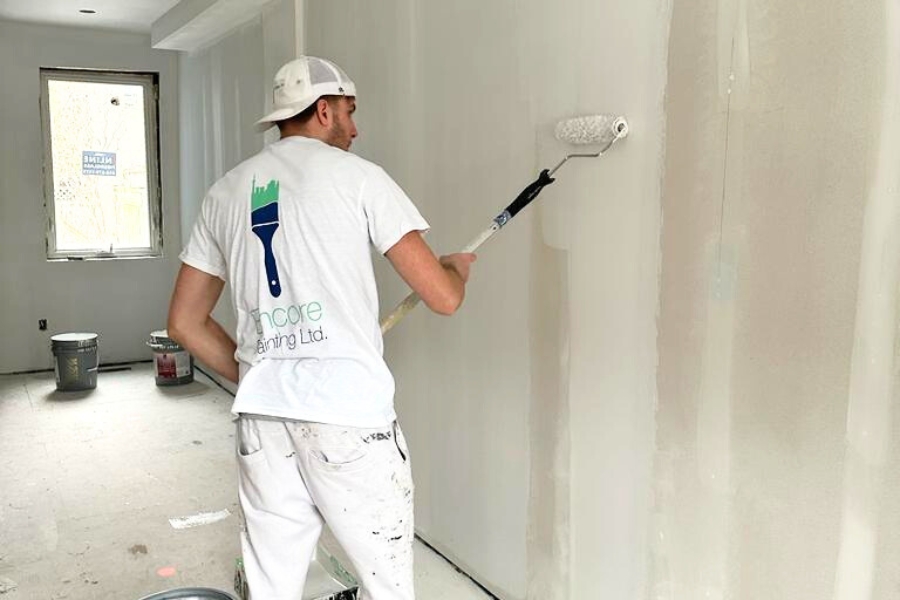If your painting projects are continuously not working out the way you want them to, it might be because you’re using the wrong brushes. Paintbrushes vs rollers: a feud as old as time! Just kidding, but not really. It might seem obvious, but paintbrushes and rollers serve very different purposes, and some of them might surprise you.
As your go-to interior painters near you, we want to share some professional tips and tricks on two of the most essential painting tools. Each has its specific strengths and uses, and knowing when to use them can save you time and give you a much more professional-looking finish.
The Basics: Paint Brushes
Paintbrushes are the traditional tool of choice for many painting projects. They come in various sizes, shapes, and bristle types, and are all designed for specific purposes. Brushes range from small, fine-tipped ones for detail work to large, wide brushes for broad strokes. Flat brushes are great for large, flat surfaces, while angled brushes are perfect for cutting in around edges and corners.
Bristles are also a sneaky aspect of making or breaking a paint job, so be sure to pay attention to this as well. When it comes to bristles, natural bristle brushes are ideal for oil-based paints, while synthetic bristles work best with water-based latex paints. Try to choose a brush that has short, soft bristles.

The Basics: Paint Rollers
Paint rollers, on the other hand, are specially designed to cover large areas quickly and evenly. They are made of a cylindrical core that’s covered with a fabric or foam sleeve that distributes the paint. Roller covers come in various nap lengths. Short nap rollers (1/4 to 3/8 inch) are best for smooth surfaces like walls and ceilings.
Medium nap rollers (1/2 to 3/4 inch) are suitable for semi-smooth surfaces, and long nap rollers (1 inch or more) are great for rough surfaces like textured walls or surfaces. Roller frames hold the roller cover and come with different handle lengths. Rollers are especially great because some of them come with extendable handles for high areas.

When to Use Paint Brushes
Paint brushes shine when it comes to detail work and edges. If you’re painting trim, molding, or cutting in around windows and doors, brushes provide that precise line and detail you need when working in tight spaces.
They are also great for smaller surfaces, like furniture or cabinetry, where better control and a smoother finish are required. For touch-ups and small repair jobs, brushes are your go-to tool.
When to Use Paint Rollers
Rollers excel at covering large, flat surfaces quickly and evenly. If you’re painting walls, ceilings, or large pieces of furniture, rollers will save you a lot of time and provide a smooth, consistent finish. They are also perfect for textured surfaces, as the nap of the roller cover can get into the crevices and grooves of textured walls for even coverage.
For big projects where speed is essential, rollers are the way to go. They can cover large areas much faster than brushes, making them a time-saving option for large-scale painting jobs.
The Perfect Combo: Brushes and Rollers Together
Often, the best approach is to use both brushes and rollers in tandem. Start by using brushes to cut in around edges, corners, and detailed areas. This technique ensures that you have clean, precise lines where walls meet trim or ceilings. Once the edges are done, switch to a roller to fill in the larger areas. This method combines the precision of brushes with the efficiency of rollers, giving you the best of both worlds.

Choosing the Right Paintbrushes vs Rollers
When selecting a brush, consider the size of the area you’re painting and the type of paint you’re using. For large, flat surfaces, a wide brush will help you cover more area quickly. For detailed work, a smaller, angled brush will provide better control.
When choosing a roller, consider the surface texture. Smooth surfaces call for short nap rollers, while rough or textured surfaces require longer nap rollers for even coverage.
Tips from the Pros
We’ve learned a few tricks over the years, so here’s a great bonus tip. When using a brush, don’t overload it with paint. Dip it about a third of the way into the paint and tap off the excess on the side of the can. This helps prevent drips and gives you better control.
For rollers, load the roller evenly by rolling it back and forth in the paint tray until it’s well-saturated but not dripping. Start painting with a W or M pattern to distribute the paint evenly before filling in the gaps with horizontal strokes.
Contact Us
Paintbrushes vs rollers have their place in any painting project. Understanding when to use each tool will help you achieve the best results. For detailed work and smaller areas, brushes are the way to go. For large surfaces and speed, rollers are unbeatable. And often, using them together will give you the perfect finish. If you have any questions or need professional help, don’t hesitate to reach out to Encore Painting, your trusted painting contractors.